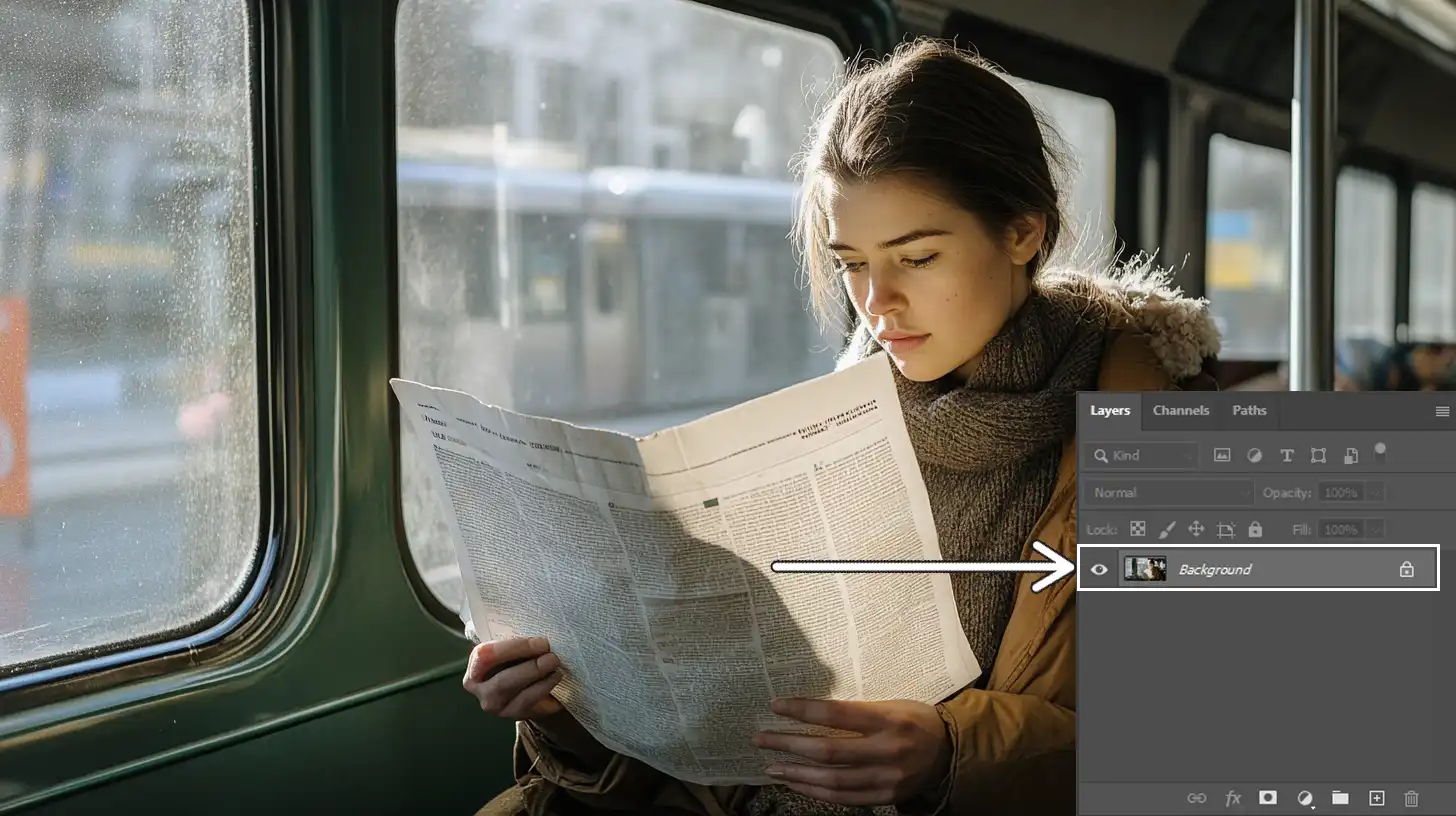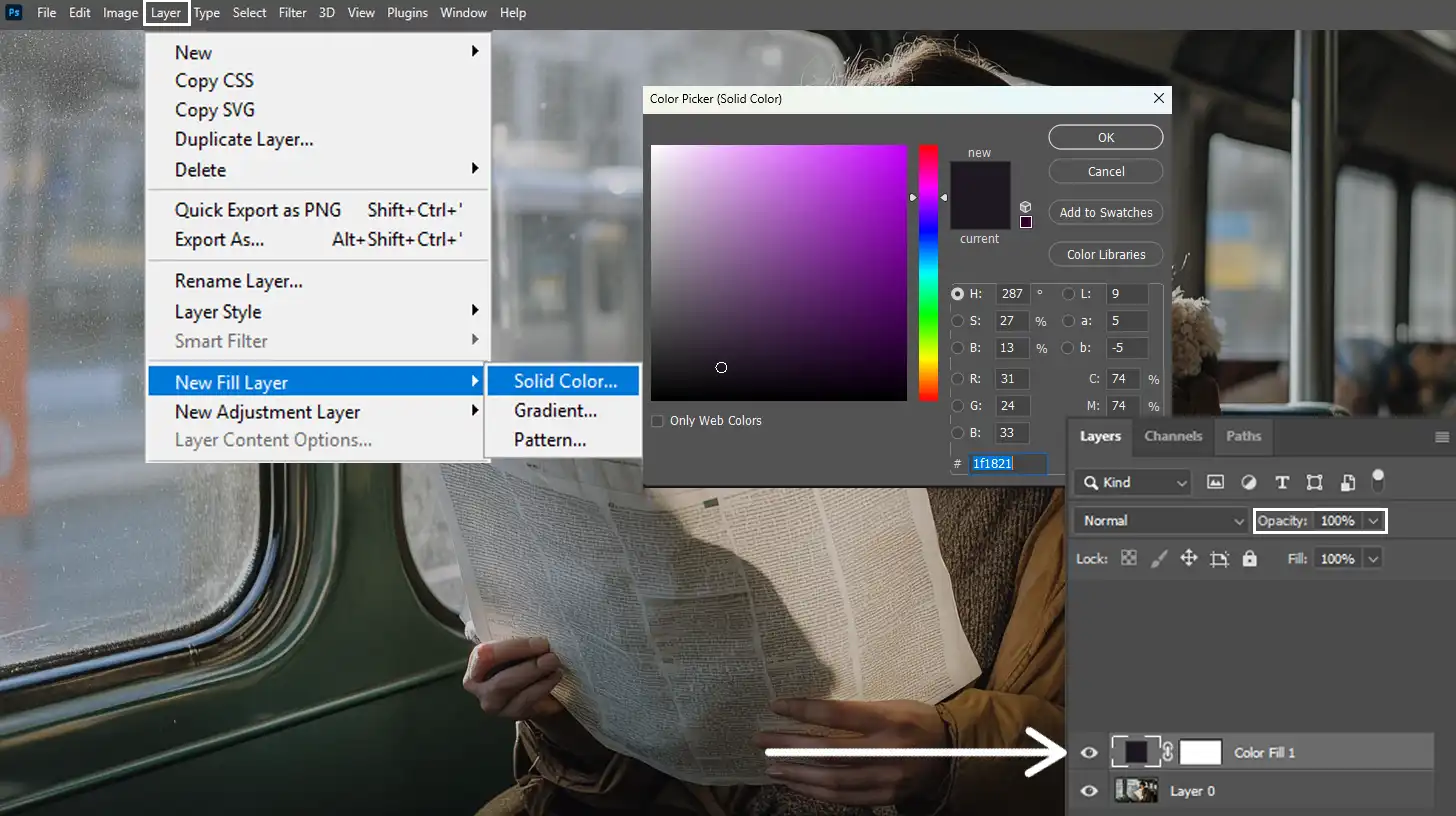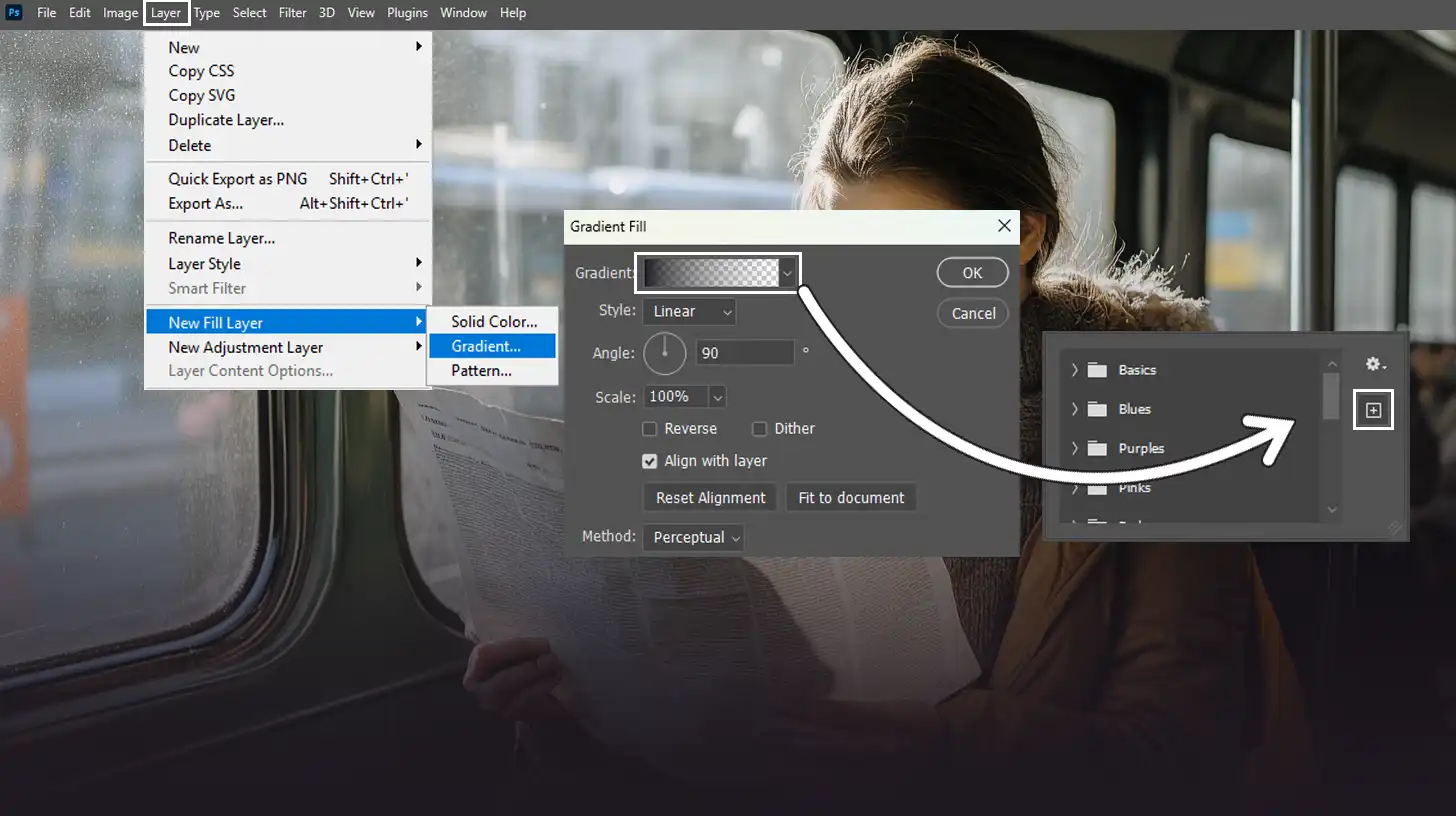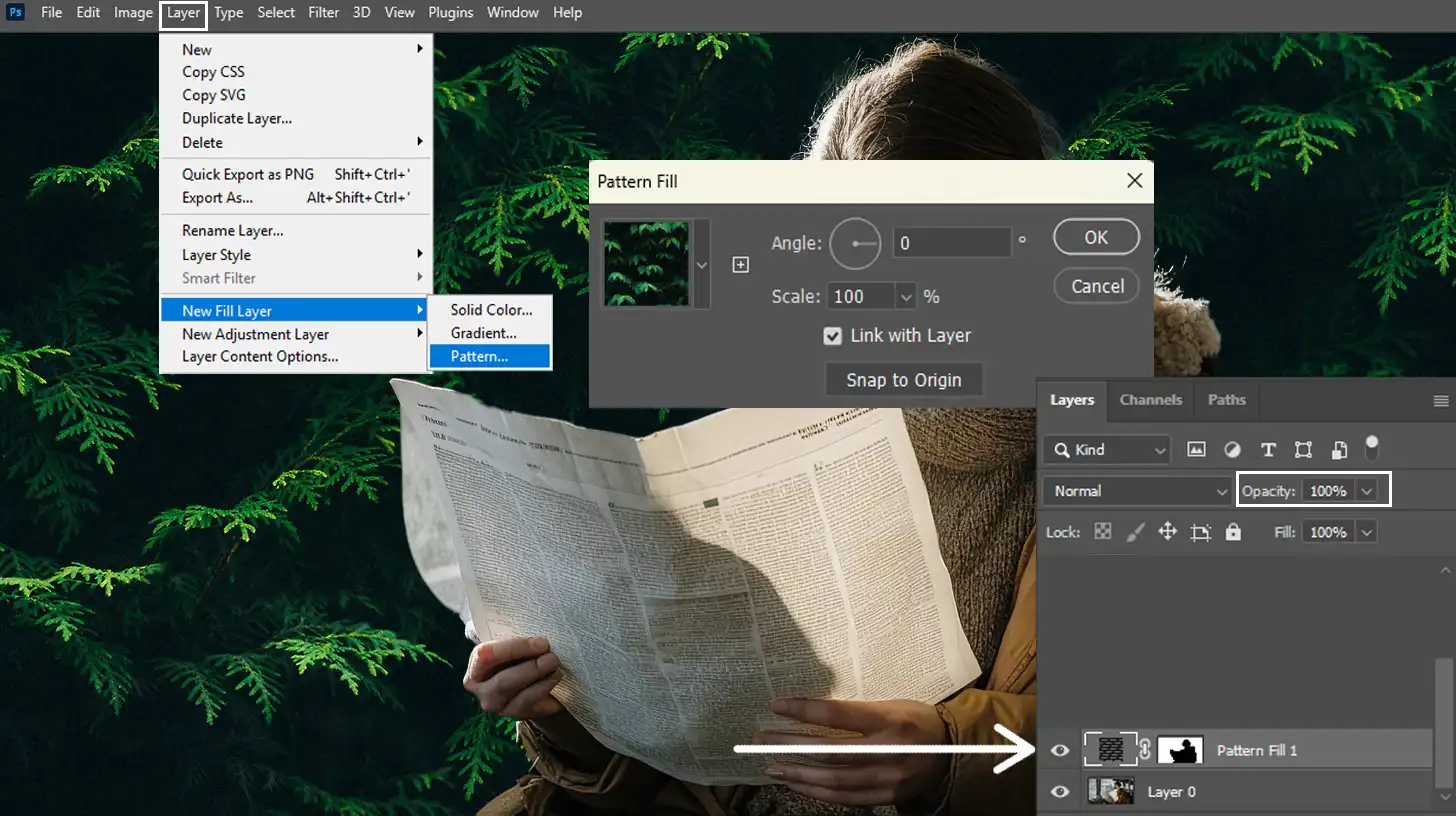
Have you ever wondered how to change background color in Photoshop to give your images a fresh and captivating look?
You’re in the right place! With just a few clicks, you can transform an ordinary photo into something extraordinary.
In this article, I’ll guide you step-by-step through the process, making it easy and accessible even if you’re a beginner.
Whether you’re looking to enhance your social media presence or create stunning visual content for your brand, learning this simple technique will unlock endless creative possibilities.
Let’s dive in and explore how you can elevate your images to the next level!
Table of Contents
How to Change Background Color in Photoshop
To change the background color in Photoshop, start by preparing your image. Open your new document and ensure that the background contents are ready for editing. This will set the stage for a seamless color change.
Preparing Your Image
First, open your image in Adobe Photoshop. Ensure the image is ready for editing and save any changes regularly to prevent data loss. Creating backup copies can be beneficial in case of unexpected issues.
Using the Layers Panel
Access this panel to view all layers in your project. Understanding how layers work is important for managing edits effectively.
Each layer can be adjusted independently, which helps keep your edits organized.
This is one of the essential tools in Photoshop that enhances workflow efficiency.
Selecting the Background Layer

Locate and click on the background layer to activate it. This ensures that changes are applied specifically to the background without affecting other parts of the image.
Confirm that the background is selected before proceeding with further edits.
Applying a Solid Color

To apply a solid color to your background, follow these steps. This process will help you change the background color efficiently and create the desired look for your image.
- Click on the layer menu.
- Select new fill layer - solid color.
- Choose your desired color from the color picker.
- Adjust opacityfor the desired effect.
The solid color fill layer overlays your background, allowing you to create a custom look by adjusting settings. This results in a clean, unified appearance.
Using the Drop Down Menu for Color Options in Changing Background Color in Photoshop
Navigate to the drop-down menu to easily select different shades. Customize backgrounds with only a few clicks, offering flexibility and experimentation until you achieve the desired result.
Additional Tools for Changing Background Color in Photoshop
Want to learn how to change background color in Photoshop? Try using the paint bucket tool or the magic wand tool for precise selections. These tools make changing the background color in Photoshop straightforward.
First, use the select subject option, then apply your chosen color. This process ensures vibrant and unique designs.
Pro Tip: When in doubt, duplicate your layers before making significant edits to maintain flexibility.
This practice helps avoid common photo editing mistakes, especially when using the magic wand tool for selections.
Advanced Techniques for Background Color Change
Changing a background color in Photoshop can be an adventure, much like discovering a new room in an old house. It’s a task that Adobe Photoshop handles proficiently.
If you’ve mastered the basics of selecting a solid color or employing a fill layer, you may want to explore more advanced techniques.
Here, we’ll discuss how to change the background color in Photoshop using gradient backgrounds, pattern overlays, and blending modes, providing various methods to create a new image and enhance your new project effectively.
Gradient Backgrounds

Gradients offer smooth transitions between colors, adding depth and dimension to your images.
To start, open the fill layer menu and select ‘Gradient‘ as your tool of choice. You can customize the gradient’s direction, style, and color selection.
Gradients allow you to create a custom background color that moves subtly from one hue to another.
By experimenting with different styles and using a layer mask, you can make non-destructive edits to the background selected. This approach helps fine-tune your gradients before committing.
Pattern Overlays

Adding pattern overlays on the background of an image creates a distinct visual impact. After selecting a background through the magic wand tool, add a fill layer with a pattern overlay.
It’s important to choose a pattern that complements your subject without overshadowing it.
Adjust the opacity to create a transparent background effect if desired, and make sure you utilize the new layer function to keep things modular.
Blending Modes
Blending modes play an important role in effectively changing background colors. Located in the layers panel just above your new layer settings, blending modes control how layers interact.
Try setting a color fill layer and experiment with modes like ‘Multiply‘ or ‘Screen‘ to explore new backgrounds.
These modes enable you to tweak the interaction between your image and the background, achieving combinations that weren’t possible with color fills alone.
Pro Tip: Use the ‘select subject‘ feature to get a head start on getting your object selection clean and precise.
For added efficiency, consider utilizing Photoshop smart fill to enhance your workflow, making it easier to change background colors without complications.
Common Mistakes and How to Avoid Them: Changing Background Color in Photoshop
Photoshop can be intimidating, but we can navigate it together. Everyone makes mistakes, even experienced users. I
n our excitement to change the background color, we may click around and end up with a chaotic image. So, how can we avoid these traps? Here’s how to stay on track.
Ignoring the Layers Panel
Layers are significant in Adobe Photoshop. Many overlook the potential here.
Start by selecting “Layer” from the file menu. The panel lets you add, delete, and manage your work efficiently.
Ignoring this is like neglecting a roadmap on a long journey; you’ll end up lost.
Be diligent here:
- Try adding a color fill layer. It helps change background without altering the main image.
- Utilize the content-aware fill in Photoshop to seamlessly blend elements into your design
Overlooking Color Consistency
Harmony is crucial. Random color choices won’t work. The color picker is your best tool. Choose a solid color that enhances your work.
To ensure consistency in your background contents, use a color fill layer. Keeping background colors uniform unifies your design.
Pro Tip: Always double-check your layers before saving. It’s a lifesaver for maintaining consistency.
If you want to explore further editing options, learn how to remove background in Lightroom for a more streamlined workflow.
Practical Applications and Examples
In product photography, presentation is everything. To make your products stand out, you can use a few different methods to change the background color, enhancing the overall appeal and drawing attention to the items being showcased.
To further illustrate the practical applications of changing background colors in Photoshop, the following table highlights the main techniques used in product photography and portrait enhancement.
| Aspect | Overview |
|---|---|
| Product Photography Techniques | Use different methods to change the background color to enhance product appeal and draw attention. |
| Importance of Background Color | Background color plays a crucial role in highlighting product details and improving overall presentation. |
| Using Selection Tools | Selection tools ensure that no part of the product is overlooked during background changes. |
| Enhancing Portraits | Change and enhance the background color in portraits for improved visual impact. |
| Matching Tones with Mood | Use the color picker to match the background tones with the desired mood of the image. |
Product Photography
Let’s discuss product photography. Have you seen those polished online store images, like a watch against a white background?
Photoshop helps achieve this look with ease, especially when you know how to remove background in Photoshop.
Steps to Enhance Product Appeal
To enhance the appeal of your product images, follow these steps:
- Use the new document menu to start.
- Adjust the background color in Photoshop to emphasize details.
- Layer masks aid in precision, making it easier to focus on the product.
- The selection tool ensures no part is left behind, which is significant for detailed product shots.
Portraits and Profile Pictures
Is your portrait or profile picture looking dull? Use Photoshop to change and enhance the background color.
Create distinction with a different hue, and consider using the dodge and burn in Photoshop for added depth.
Steps to Transform Portraits
To transform your portraits effectively, follow these steps:
- Grab the selection tool for perfect cuts.
- Adjust background contents within the new document.
- Think about using the color picker. Match tones with mood.
Pro Tip: When adjusting background color, save different versions. Experiment with different vibes without losing your original work. This way, you can make the most of the layer masks and quickly revert back!
For additional tips for product photography, consider how to do 360 product photography for a comprehensive view of your items.
Frequently Asked Questions

What steps should I follow to change the background color?
- Step 1: Open the Photoshop project where you want to change the background color.
- Step 2: Select the 'Layer' menu, then choose 'New Fill Layer' and click on 'Solid Color'.
- Step 3: Pick the color you want and click OK.
How to fill in a background in Photoshop?
- Step 1: Choose the 'Paint Bucket Tool' from the toolbar.
- Step 2: Select the color you want to fill the background with from the color palette.
- Step 3: Click on the background area to apply the color.
What steps should I take to change the background color of my workspace in Photoshop?
- Step 1: Right-click on the blank area of your workspace.
- Step 2: Select one of the default colors or click on 'Custom Color' to choose a new one.
- Step 3: Apply the selected color by clicking OK.
How do I change the background of a photo?
- Step 1: Open the photo in Photoshop.
- Step 2: Select the 'Quick Selection Tool' from the toolbar to select the area you want as the new background.
- Step 3: Once selected, go to 'Edit' and then 'Fill' to choose a new background color or pattern.
- Step 4: Click OK to apply the changes.

Conclusion
Learning “how to change background color in Photoshop” has been a game-changer for me. I remember the first time I successfully changed the background color of an image; it felt like unlocking a new level of creativity.
This skill has not only enhanced my photography projects but also made my work stand out.
I encourage anyone interested in elevating their editing skills to explore this technique. It opens up endless possibilities and can significantly improve your portfolio.
I encourage you to explore this technique as it can enhance your portfolio significantly. For those looking to deepen their skills, consider my Photoshop Course and Lightroom Course. Both courses offer practical guidance and examples that can help you improve.
Whether you’re a beginner or looking to refine your skills, mastering background color changes will benefit you. Embrace this creative process and watch your work transform. If you need Photoshop or Lightroom, you can get them from Photoshop and Lightroom.
Read more about Photoshop:













